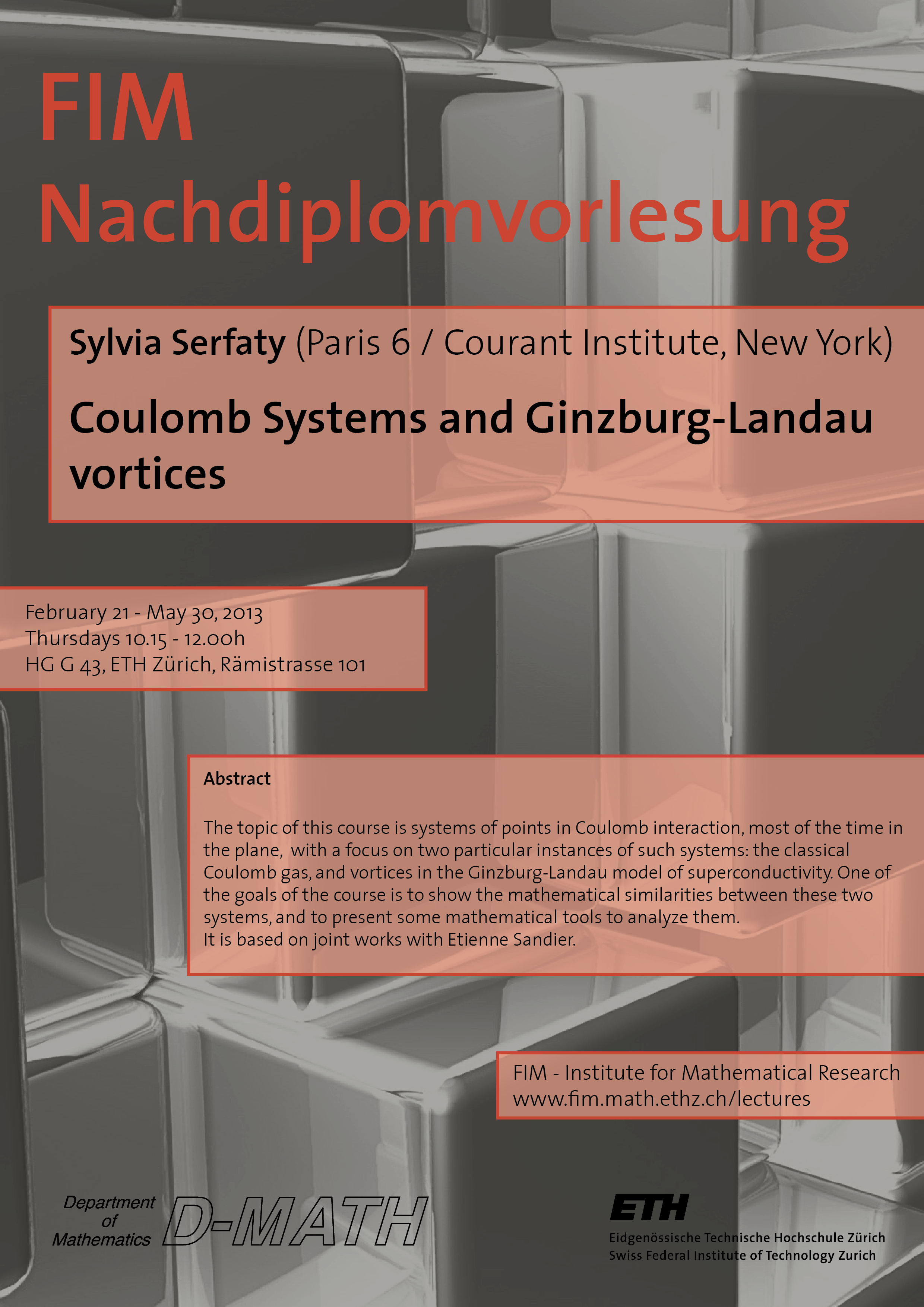Past lectures
Coulomb Systems and Ginzburg-Landau vortices
Prof. Dr.
Sylvia
Serfaty
Université Paris 6 / Courant Institute, New York
February 21 -
May 30, 2013
Date and time: Thursdays, 10:15 - 12:00
Location: HG G 43
Abstract
The topic of this course is systems of points in Coulomb interaction, most of the time in the plane, with a focus of on two particular instances of such systems: the classical Coulomb gas, and vortices in the Ginzburg-Landau model of superconductivity. One of the goals of the course is to show the mathematical similarities between these two systems, and to present some mathematical tools that we have used to describe them. It is based on joint works with Etienne Sandier.
In superconductivity, one observes in certain regimes of external magnetic field the emergence of densely packed point vortices forming perfect triangular lattice patterns. These are named Abrikosov lattices in physics. One of the final goals of the course is to derive, from the Ginzburg-Landau functional of superconductivity a "Coulomb renormalized energy" that describes the Coulomb interaction between the vortices, and that hints at the Abrikosov lattice. In order to do so we will introduce a set of techniques, which will first be presented in the simpler context of the Coulomb gas. The Coulomb gas is a statistical mechanics system, where particles interact via a Coulomb kernel and are kept together by a confining potential. Such a system can be studied at zero temperature (i.e. examining ground states, or energy minimizers) in which case minimizers also corresponds to "weighted Fekete sets", or with temperature. For a certain specific value of the temperature, the system coincides with a random matrix ensemble. Using tools of analytic as well as of probabilistic nature, we will describe the microscopic distribution of the points, and also connect it to the Coulomb renormalized energy and the Abrikosov lattice.
The plan of the course is the following:
- introduction to the Coulomb gas, motivation, etc
- mean-field limit and large deviations results at leading order
- the renormalized energy: definitions and properties
- the ball-construction method in the simplest context
- microscopic behavior of the Coulomb gas and large deviations result at the next order
- presentation of the Ginzburg-Landau model of superconductivity, heuristics, critical fields
- the ball-construction method in that context and the "Jacobian estimates"
- derivation of mean-field limit and of the renormalized energy
